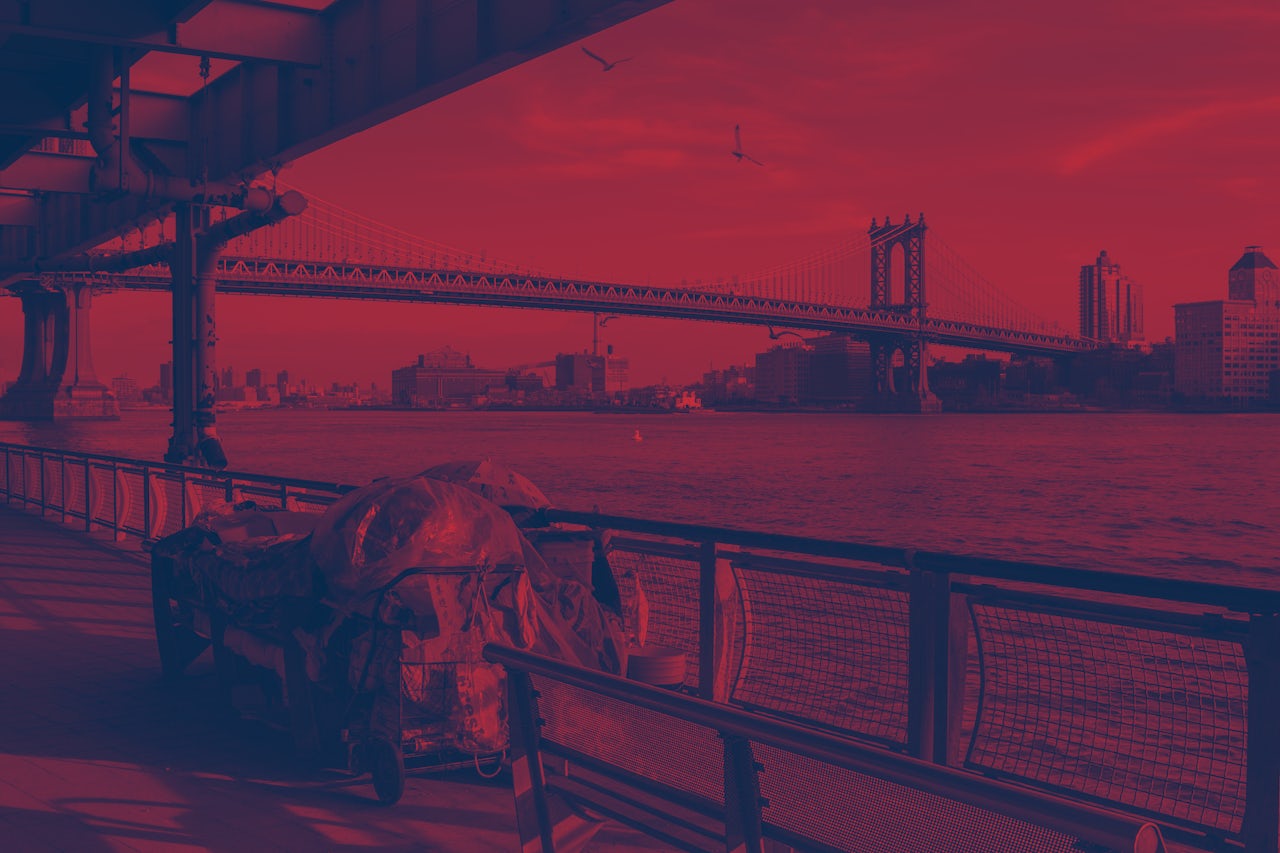In the winter of 2015-2016, New York City came to recognize that it had a new crisis of homelessness. As more people than ever slept in shelters, newspaper editorials called for action. Mayor Bill de Blasio, after saying in July 2015 that “homelessness is not going up, thank God,” finally woke up to the issue, announcing a plan to build more affordable housing over the next 15 years.
If that was the season when we noticed the problem, the winter of 2016-2017 is when we came to realize that it wasn’t going away anytime soon.
Nowhere was that more evident than in a de Blasio news conference earlier this week, during which the mayor debuted a 128-page report on homelessness and announced a plan to open 90 more shelters. The plan’s stated goal was to reduce the homeless population by 2,500 by 2021 — a mere 4-percent improvement over five years. Total fulfillment of that goal, which could be impeded by resistance in the Brooklyn and Queens communities where the shelters arise, will keep homelessness at the levels that have startled us over the past few years.
Homelessness is an issue in every major city, but New York’s problems are perhaps the worst. A study last year by the San Francisco Homeless Project found that New York had the highest number of homeless people per 100,000 residents, with 887. San Francisco was second with 795, followed by Seattle with 487 and Philadelphia with 384. But while San Francisco’s homelessness crisis has looked much the same for the past two decades, New York is reeling from a newer crisis that it is still struggling to understand.
“Is it everything we want it to be?” de Blasio said of his new plan, hardly reaching for soaring rhetoric. “No. It’s the honest goal.”
The report, titled “Turning the Tide of Homelessness in New York City,” added: “There are no silver bullets here. We will not solve this crisis overnight. It will be a long, hard fight.”
Give the city points for realism, if not ambition or inspiration. Though he is following through on his affordable housing pledge from 2015 — a plan that will take years to make a noticeable difference — de Blasio has overall earned low marks for his approach. He was too slow to even acknowledge the problem, and the coalition is still pushing him to be much more aggressive, and take actions like doubling the number of public housing units available to families in shelters.
“The 2,500 estimate is less than hopeful, but we’re continuing to push,” Giselle Routhier, policy director at the Coalition for the Homeless, told The Outline. “I think people are still concerned, and still trying to figure out how we can address the problem.”
The data on the issue is striking. According to the Coalition:
- Homelessness in the city has reached its highest levels since the Great Depression.
- In December, more than 62,000 people (including more than 24,000 children) slept in the city’s shelter system, a new record. The Coalition estimated the number at 60,000 people in 2016.
- Homelessness in NYC has increased by more than 83 percent in the past decade.
- The problem disproportionately affects people of color: 58 percent of New York City homeless shelter residents are African-American, 31 percent are Latino, and 7 percent are white.
- A 2016 study by the National Alliance to End Homelessness showed that the NYC crisis comes at a time when homelessness has actually seen a 2-percent decline nationwide.
So why is this happening, and why is it so hard to fix? The most basic and meaningful explanation is an issue familiar to New Yorkers at most income levels: rising rents. It is far more difficult than ever before for struggling folks to afford an apartment, even in outer-borough neighborhoods that were once inexpensive. This is highly unlikely to change in the near future.
Most experts say that the single biggest catalyzing event for the current crisis came in 2011-2012, when the state, followed by then-Mayor Michael Bloomberg, allowed a program called Advantage to expire. Advantage provided rent vouchers for two years to get people off the streets and out of the shelters. It was flawed, and even advocates complained that it created cycles of homelessness by tossing recipients back on the streets every two years, but its expiration created a void. Combined with the issue of rising rents, the city and state couldn’t have killed the funding at a worse time — and by 2013, more than 8,500 families were newly homeless. The trend spiraled from there.
So here we are, with a problem that has settled in for the long haul, more people than ever freezing on the streets, and a mayor who is finally taking action, but not aggressively enough.
